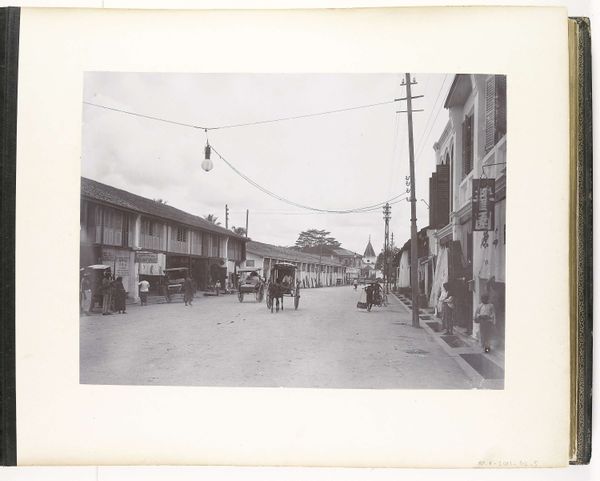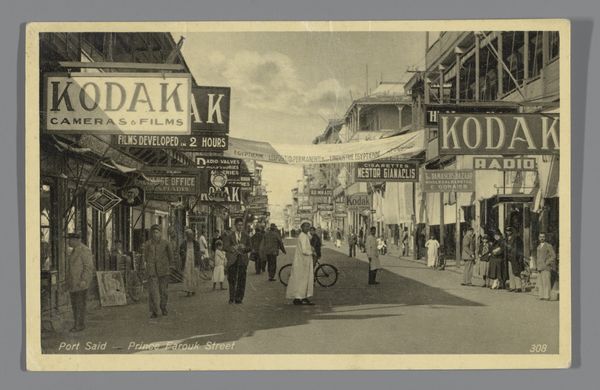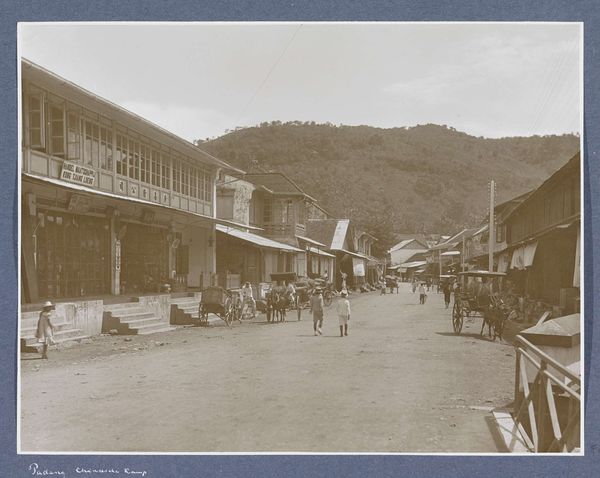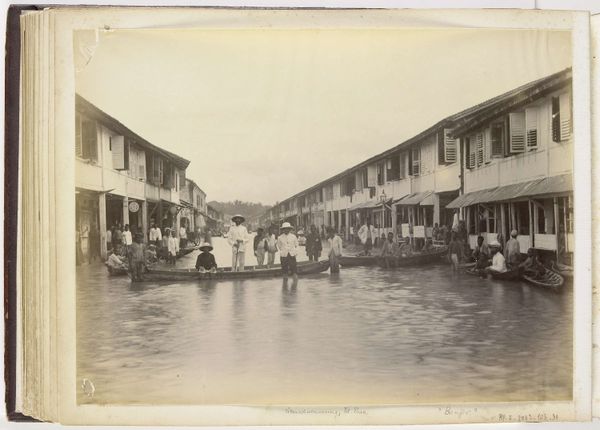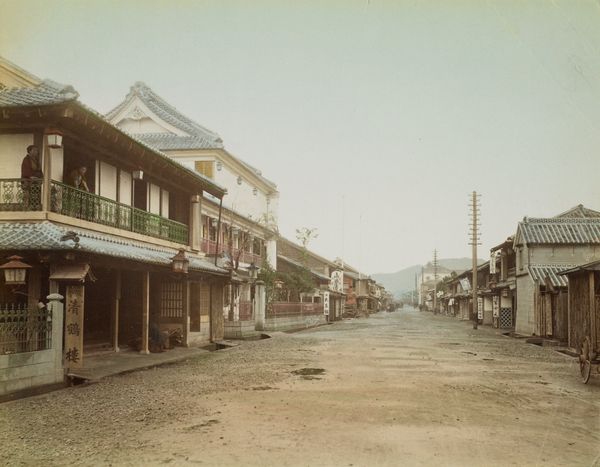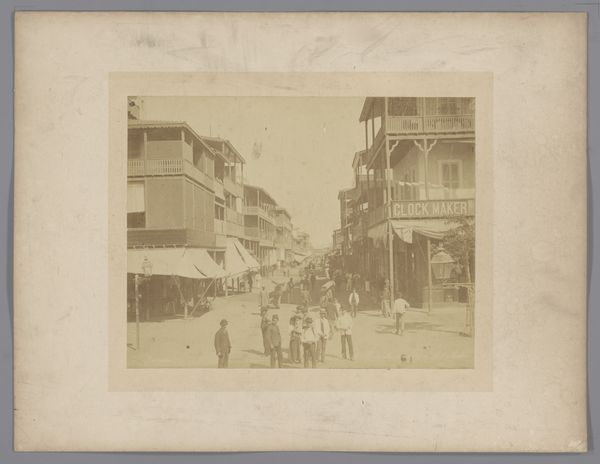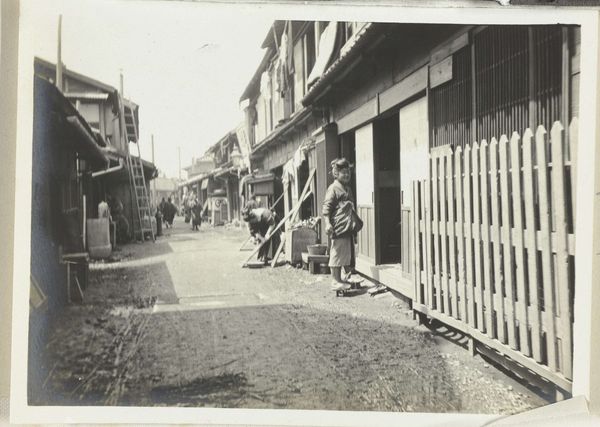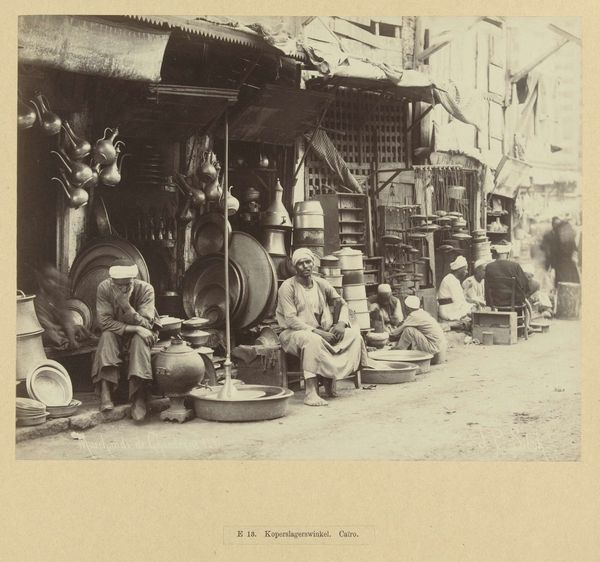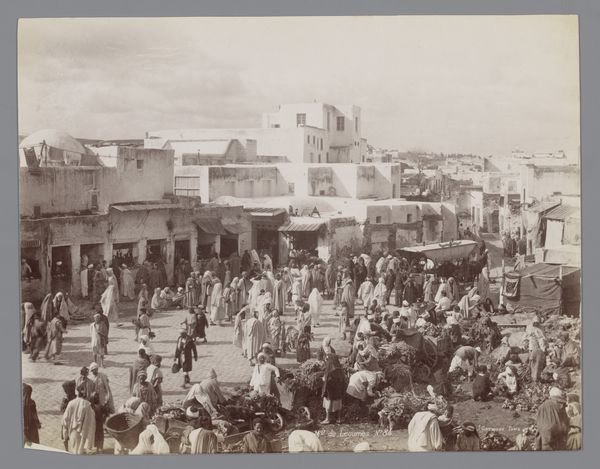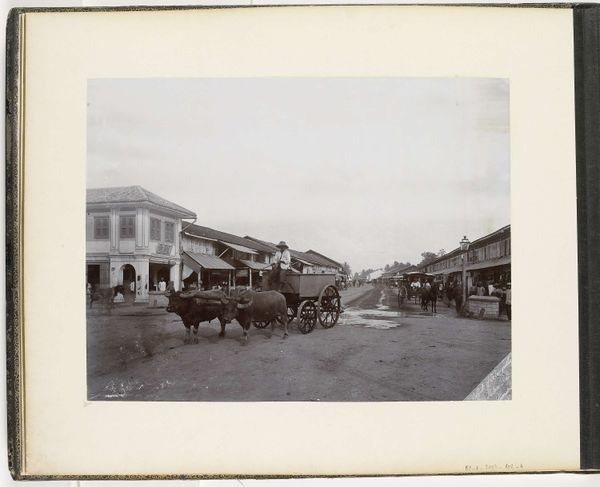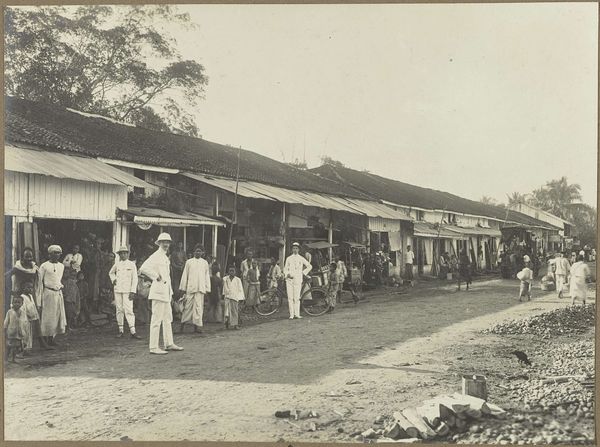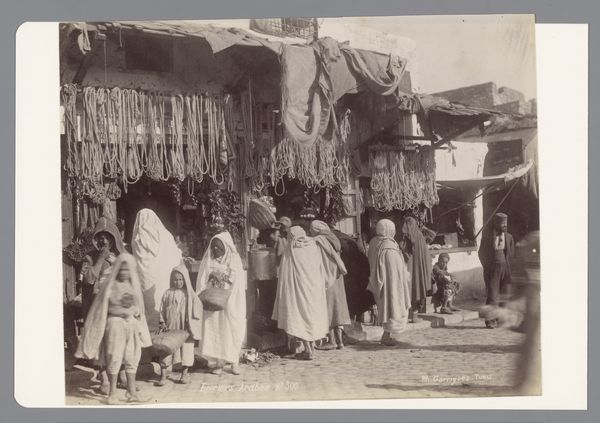
Straat in de Klingalese Kamp in Padang c. 1900 - 1920
0:00
0:00
christiaanbenjaminnieuwenhuis
Rijksmuseum
photography
#
landscape
#
archive photography
#
street-photography
#
photography
#
historical photography
#
cotton
#
cityscape
Dimensions: height 204 mm, width 289 mm
Copyright: Rijks Museum: Open Domain
Curator: This captivating archival photograph, "Straat in de Klingalese Kamp in Padang," offers a glimpse into a street within the Klingalese Kamp in Padang, likely captured between 1900 and 1920. Editor: It has an undeniably dreamlike, sepia-toned quality. I'm struck by the heavy canvas awnings shielding the storefronts – and that feeling of intense, almost palpable, heat. Curator: Indeed. It is part of a larger visual project undertaken during the period of Dutch colonial expansion. The act of photographing becomes intertwined with strategies of observing, documenting and, in many ways, codifying the space of the other. Editor: And those canvas awnings – likely locally sourced cotton, I'd imagine? Think of the labor involved in their production, their stitching. And see how their ubiquitous presence speaks to the demands and adaptations needed to navigate the climate. Curator: The presence of the mosque further shapes the understanding of the socio-cultural setting. The photographic lens mediates between public display and private existence, which impacts the perception of those images when distributed. Editor: And the architecture itself, this is clearly adapted for local life with those broad overhangs, and the people, in their garb and carriage. Even those cobblestones beneath, what of their quarrying, and transport to the locale? The history isn't just of power but labor too. Curator: Absolutely, it's a document reflecting orientalist perspectives of the time, which brings us to examine how the image was made for a Western audience. Editor: Acknowledging all the labor, and extraction embedded in something as simple as these shades in photography reframes how we engage the artwork itself, beyond its more obvious ethnographic qualities. Curator: Understanding the social history woven in, along with the means of its making gives you more perspective, doesn’t it? Editor: Indeed, understanding the labor provides the viewer a more nuanced appreciation.
Comments
No comments
Be the first to comment and join the conversation on the ultimate creative platform.
